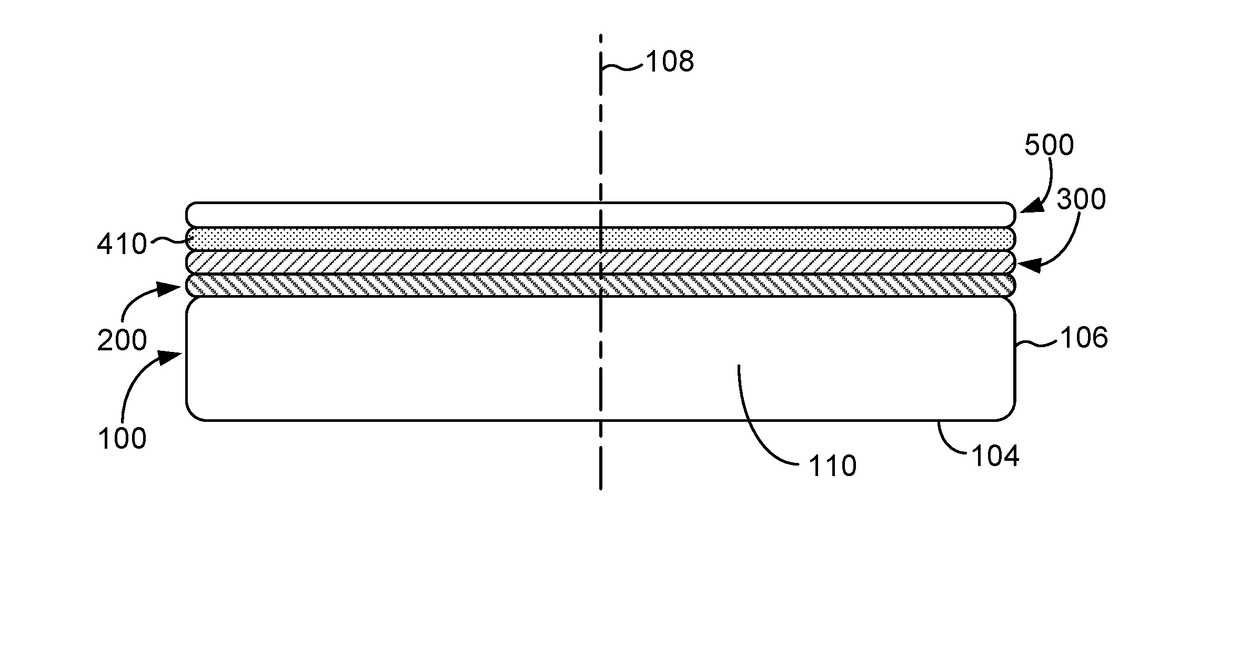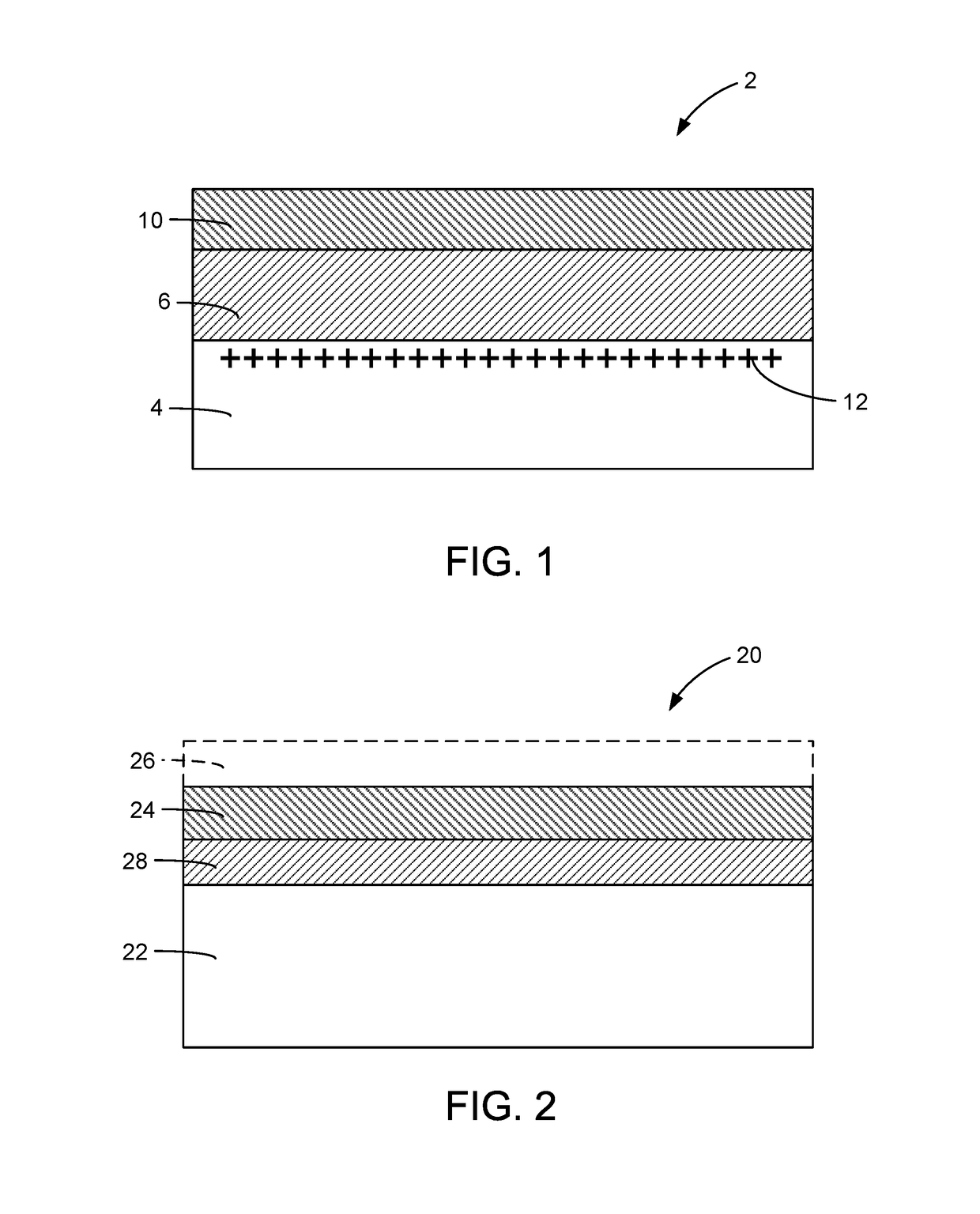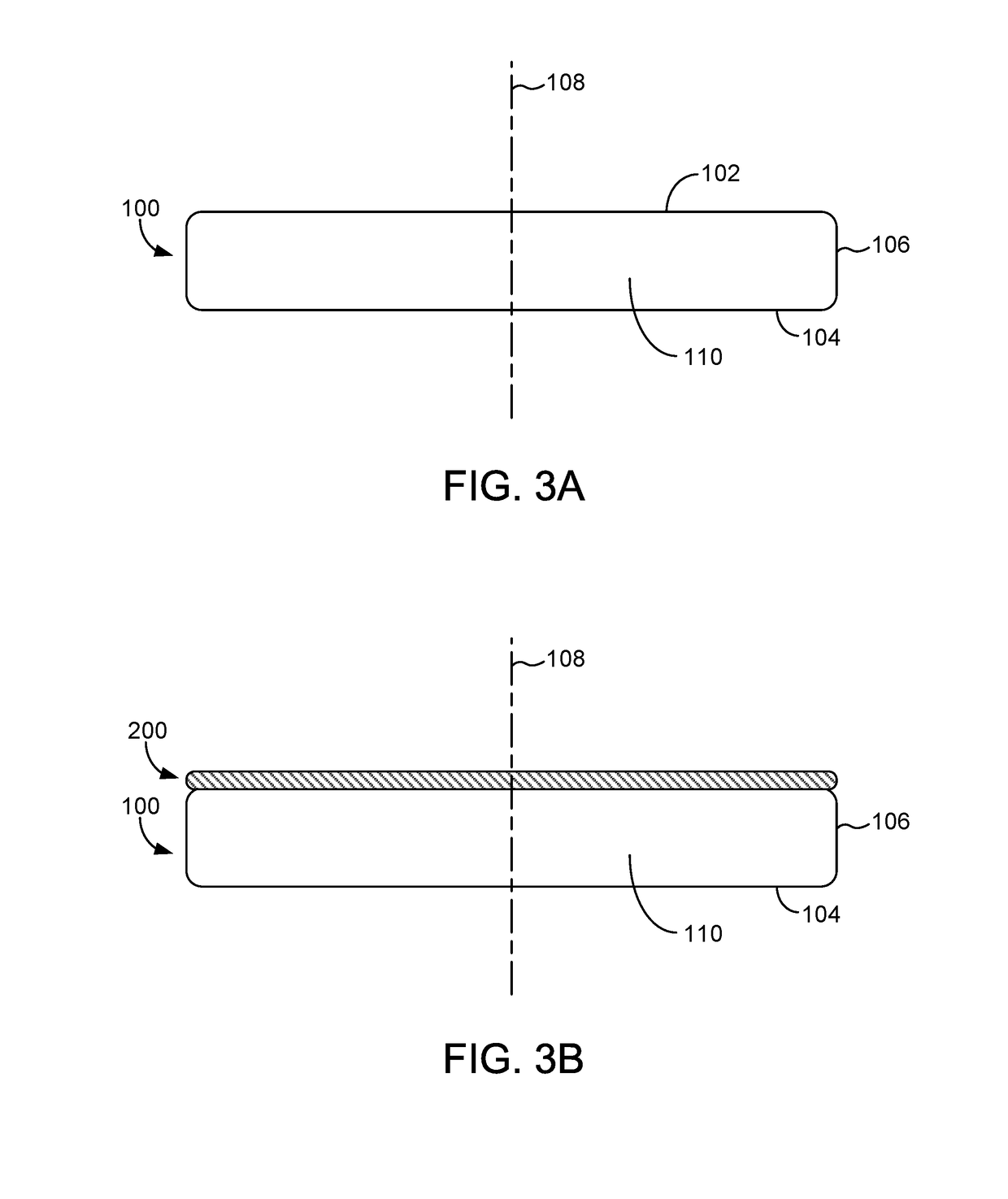High resistivity silicon-on-insulator substrate having enhanced charge trapping efficiency
a technology of charge trapping efficiency and silicon-on-insulator substrate, which is applied in the direction of basic electric elements, electrical equipment, semiconductor devices, etc., can solve the problems of wasting one of the substrates, not having suitable thickness uniformity, and time-consuming and costly methods
- Summary
- Abstract
- Description
- Claims
- Application Information
AI Technical Summary
Benefits of technology
Problems solved by technology
Method used
Image
Examples
example 1
[0072]Two groups of 200 mm diameter boron doped silicon (100) substrates with resistivity of 1,500 and 4,000 Ohm-cm, respectively, were used to demonstrate the advantage of using an engineered epitaxial layer to boost the RF performance. The substrates were cleaned using SC1 / SC2 clean in a commercial wet bench followed by epitaxial growth of a silicon layer of between 5 micrometers and 10 micrometers (5 micrometers in this example). Silicon epitaxial growth was conducted in a 200 mm Centura reactor at a temperature between 1000° C. and 1100° C. (1100° C. in this example) at atmospheric pressure. Trichlorosilane (TCS) was used as the Silicon precursor, and H2 as the carrier gas. Typical process conditions used to provide a growth rate of between 2 micrometers / minute and 4 micrometers / minute (4 um / min in this example) growth rate were: TCS at a flow rate of 10 g / min, H2 at a flow rate of 20 slm. The epitaxial layer target resistivity was controlled between 200-2000 Ohm-cm (1000 Ohm-cm...
PUM
 Login to View More
Login to View More Abstract
Description
Claims
Application Information
 Login to View More
Login to View More - R&D
- Intellectual Property
- Life Sciences
- Materials
- Tech Scout
- Unparalleled Data Quality
- Higher Quality Content
- 60% Fewer Hallucinations
Browse by: Latest US Patents, China's latest patents, Technical Efficacy Thesaurus, Application Domain, Technology Topic, Popular Technical Reports.
© 2025 PatSnap. All rights reserved.Legal|Privacy policy|Modern Slavery Act Transparency Statement|Sitemap|About US| Contact US: help@patsnap.com



